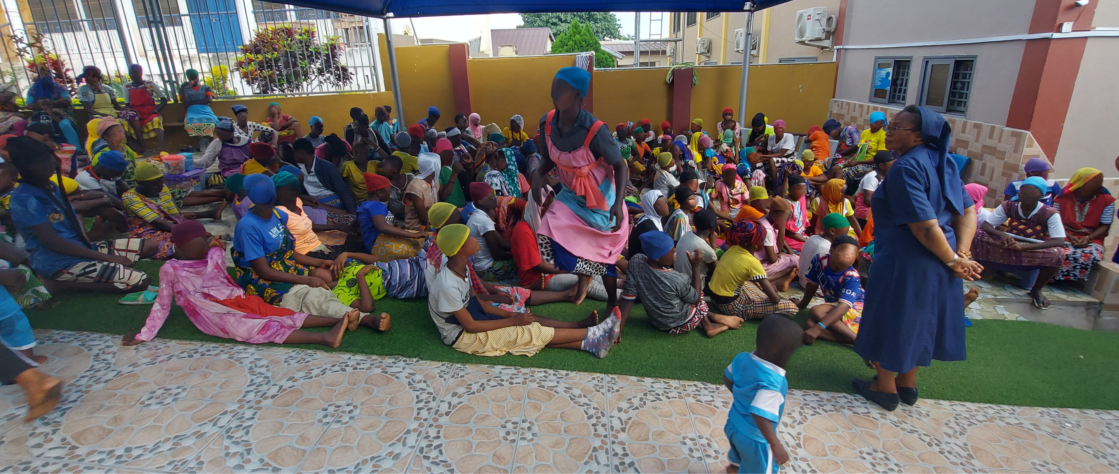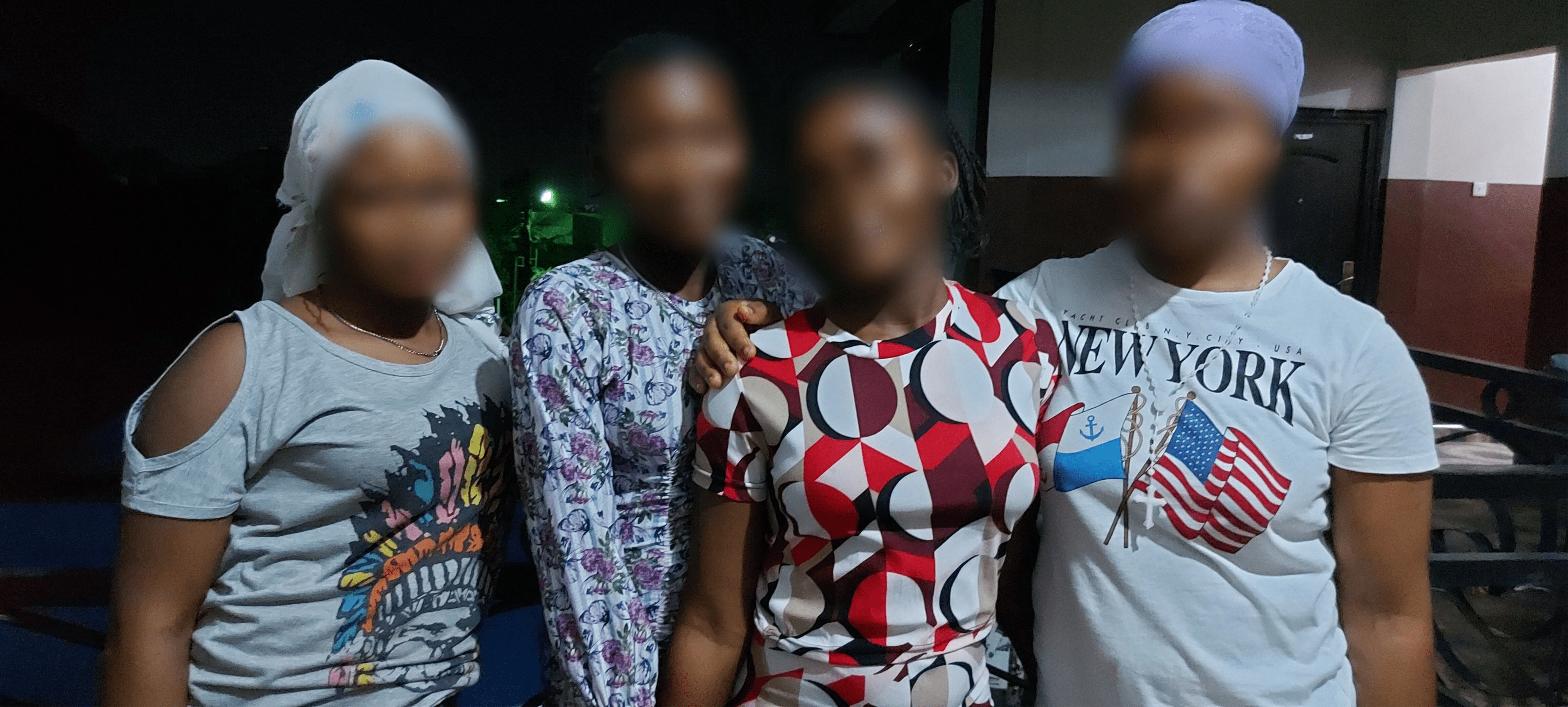The World Day against trafficking in persons is observed annually on July 30th to raise awareness about a crime which affects millions of people worldwide [1]. Human trafficking is a violation of human rights involving the exploitation of individuals for various purposes, which can include forced labor, sexual exploitation, and organ trafficking.
This occasion serves as a reminder of the complex intersection between human trafficking and homelessness. Homelessness often exposes individuals to increased vulnerability, making them targets for traffickers who exploit their situation [2]. Lack of stable housing, limited access to support networks, and economic hardships contribute to the susceptibility of people experiencing homelessness to trafficking.
The Daughters of Charity in Ghana witness this intersection every day. With the “13 Houses” project: ‘Street Children’ they help girls and young women who wish to leave the streets but have no place to go, by protecting them from trafficking and exploitation. In Kumasi (where the Sisters operate) the need is enormous, and it is in fact estimated that at least 20,000 children [3] live on the streets and are at risk of being exploited. The Daughters work ceaselessly to help them explore other options in life, including by helping them towards reintegration, providing opportunities for education, and offering support to set up their own business or engage in skills training.
Sister Olivia (“13 Houses” Project Leader and Director at the Talitha Kum*), shares with us her testimony together with Favor, a 16-year-old girl who has been assisted by the Sisters.
On this day, we come together to advocate for the victims, and to call for concerted efforts to eradicate human trafficking in all its forms.
* An International Network who engages in the work against Human Trafficking, facilitates collaboration between organizations and countries, and exchanges information between members of religious congregations in more than 90 countries around the globe.
Interview with Sister Olivia, Daughter of Charity (Kumasi)
“13 Houses” Project Leader and Director at the Talitha Kum
- How did you become involved in this service? What motivated you to support victims of human trafficking?
I got involved in human trafficking through working with homeless children in street situations. Some children on the street are victims of internal trafficking. Also, children in street situations are at risk of being trafficked within and outside Ghana. Some of the children were trafficked and got in touch with us, so we facilitated their reintegration when they eventually were rescued and transported back to Ghana around 2018. I also became involved in anti-trafficking services through membership of the Talitha Kum network. In 2018, the Talitha Kum International Network came to Ghana to introduce and train the Sisters in supporting victims of human trafficking. I participated in this, and because I already work with children, youths and women in street situations, I was nominated the role of coordinator for the Talitha Kum Ghana Network of Consecrated Persons. This responsibility exposed me to other anti-trafficking networks and increased my knowledge of human trafficking activities.
I undertook several training sessions and shared this knowledge with my colleagues. Then we started raising awareness of human trafficking and building our anti-trafficking networks. Victims of human trafficking started coming to us for support when they managed to escape. I initiated meetings with the Anti-Trafficking Unit of the Ghana Police Service, and we started collaborating to improve public education, and worked together on rescue support. The police carried out the rescue of victims, before bringing them to us for shelter. From that point, we work with them to facilitate their reintegration.
- In your experience, what are some of the key factors contributing to human trafficking in Ghana?
The key push factor of human trafficking in Ghana is poverty. Other factors include:
- rural-urban migration
- child streetism
- the practice of sending children from rural areas to live with relatives in the cities
- exploitation
- loose inter-regional borders
- poor enforcement of anti-trafficking legislation.
- Can you discuss the connections you’ve observed between human trafficking and homelessness? What is the situation in Ghana, based on your experience?
We observed that children, youths or women who live on the streets, are particularly at risk of human trafficking, as they are often desperately in search of sustenance and survival. They can fall prey to deceitful offers of a better life and good jobs. Homelessness renders people vulnerable to the extent that they might accept any offer that holds promises for an alternative livelihood. Having no home or family to look out for them, traffickers readily take advantage of young people in homeless situations. We have had a few cases where children on the streets just disappeared and upon investigation, we would hear that they followed some people who offered to take them outside the country. In a few cases, the children were trafficked to countries like Lebanon, Saudi Arabia, Libya, Kuwait, Iman and Dubai. Some were rescued by the government, some managed to escape and returned alive, and some lost their lives. We supported the rehabilitation of some of the girls who returned and came to us.
- What changes or improvements do you believe are necessary at the societal or systemic level to combat human trafficking more effectively?
The following improvements are necessary at societal or systemic level to combat human trafficking:
- Duty bearers need to have the political will to combat human trafficking and not just pay lip service to the issue.
- There is a need for the government to practically address poverty, the key culprit that puts young people at risk of human trafficking.
- There needs to be good collaboration between government agencies and civil society organizations to eradicate poverty.
- The government needs to enact and enforce anti-human trafficking laws.
- Traffickers must be prosecuted to deter others.
- Survivors need to be empowered with a source of livelihood towards rehabilitation. It is almost impossible for survivors to cope when they return to the same poverty situation that predisposed them to human trafficking.
- Public education is key to ending human trafficking. I believe duty bearers and all stakeholders should make efforts to educate the public, as is done with other serious global issues.
- What message would you like to give to other Vincentians worldwide working with people who are victims of human trafficking?
My message to other Vincentians working with victims of human trafficking:
- That we continue to raise awareness of the reality of human trafficking among at risk populations.
- We should create opportunities for people in vulnerable situations, to reduce their risks of falling victim to human trafficking.
- We should support prosecutions of perpetrators.
- We should continue to support the rehabilitation and reintegration of victims.


This is very educative
I will always recommend this woman for the greater work she is doing in the lives of many. I am proud of her and pray for such mantle or grace she carries and the energy as well. Keep on Sr. Olivia Umoh
Beautiful that a very positive thinking
The affected individuals also need to come to a personal decision fir a better alternative.
Thank you sister for your indefatigable presence and support for those who are poor.